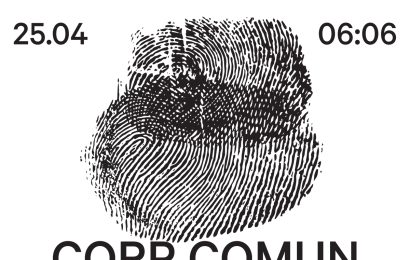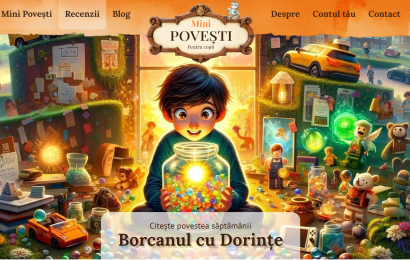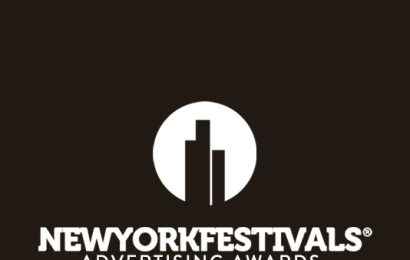Murat Kalafat (Criteo): “Personalization is a key driver for better user experience”
Murat Kalafat is the Managing Director Turkey and Eastern Europe at Criteo. In this position, he oversees all the existing and new business of Criteo in Turkey and Eastern Europe. Previously, he was Managing Director for Ligatus Gmbh Turkey, the leading native advertising network in Europe, he launched and established the Ligatus Turkey office and managed for 4,5 years. He also made the market entry for AWIN (previously zanox), leading affiliate marketing company, in Turkish market. He has gained over 17 years of experience in digital and telecommunications industries with among others Flycell Avea, Telsim and Netaş. He offered AdHugger.net an exclusive interview.
AdHugger: What would you say that are the main trends in performance marketing worldwide for 2019?
Murat Kalafat: I see several big trends coming up, the biggest is maybe the trend towards better personalization of web shops and digital advertising alike. Personalization is a key driver for better user experience and as a consequence more sales, but it depends on a wealth of data in combination with sophisticated Artificial Intelligence-driven technology to turn them into insights and action. This is now possible and one of the reasons why almost everyone is talking about AI.
Another trend is the ongoing shift of e-commerce from desktop to mobile devices and to apps. Retailers see the big benefits of apps, like up to four times higher conversion rates in apps compared to mobile websites; apps thus perform even better than desktop. This shift of course also implicates a shift in retailers’ performance marketing tactics.
Finally, on the publisher side, I expect an ongoing shift to sophisticated programmatic buying technologies like header bidding. That’s because publishers see the value of data to better monetize their inventory.
AdHugger: How is Eastern Europe still different? Why?
M.K.: When it comes to Programmatic, especially Romania has kind of a tradition to mainly do programmatic via Facebook and Google. Which is not bad in general, but as in any industry: When you rely on just a very few players, you risk dependencies. Publishers found that they can earn more money when adding additional programmatic players. Header Bidding is a great technology to increase revenues from inventory. But it’s not an easy topic. Criteo offers its own header bidding solution Criteo Direct Bidder, but we do a lot of consulting around it.
That’s something we generally see in the market. There is a big demand in consulting and support. No matter if it’s about Programmatic or apps, players in the market want to understand the details and take more time for decision-making. That’s why Western Europe and especially the US are usually a step ahead when it comes to new technologies.
AdHugger: What about Romania? Where do you see more potential for our market and why?
M.K.: e-Commerce is dominated by big local players and not by US giants. If you take Germany for example, half of e-Commerce is already Amazon. So retailers are mainly busy on strategies how to compete with them. That’s a big advantage for Romanian retailers. They know their audience, how people feel and what they are concerned about. These days they can combine this knowledge with sophisticated data-driven marketing solutions to serve consumers exactly what they want and need.
AdHugger: Where are still the main challenges and why?
M.K.: Consumers in Romania are still more critical when it comes to online shopping than in most other country. Cash-on-Delivery is still the most preferred payment method when shopping online; there is no big trust against in paying online by credit card for example. That’s a big challenge for retailers to trigger a shift in the minds of consumers and to establish more trust in online shopping and payments in general. We saw trust already growing in 2018 and expect further progress next year; which is great as this will give e-commerce a new push.
AdHugger: What does Criteo offer differently than its competition?
M.K.: Criteo is a truly global company that offers marketing solutions from generating awareness to sales to our clients. While retargeting is what made us big, we are a now a multi-product company delivering performance at any stage of the customer journey. On top of that, we offer solutions for advertisers to monetize their web traffic to brands. Three things set us apart.
- The size and scale of our business. According to market research firm IDC, Criteo is the leading ad tech company globally in terms of market share. We reach 1.2 Billion users online and see sales transactions of $615 Billion on the web shops of our clients that can be turned into insights.
- Our technology. Machine Learning is the heart of everything we do since Criteo got founded back in 2005. We predict how likely a user would click on an ad before showing it, recommend the best possible product and optimize the creative design of the ad in real-time – all in order to achieve real performance for our clients, which in the end means valuable sales. On top of that, our AI lab investigates on Deep Learning and where to apply it for additional value. This technology requires big capabilities and should be applied wisely.
- Our level of service and professionalism. We see ourselves as a consultative partner for clients with senior staff focused on helping them to achieve their short-, mid- and long-term goals.
AdHugger: What are clients’ main requests?
M.K.: First of all they ask us to help them increase their revenues. Which is of course why you do performance marketing. Secondly, they ask us for advanced data that help them to better understand their users behavior. Data-driven attribution is something they really care about. And finally for support, not only related to Criteo solutions, but also beyond. Clients love our international knowledge in different areas of our industry and we are more than happy to help.
AdHugger: On a market dominated by numbers and mathematics, where does creativity lay and how does it work?
M.K.: Creativity is absolutely key in advertising. Users see tons of ads every day and unconsciously decide within milliseconds if they like your ad or not. On the one hand side it’s about if the recommended products are relevant to this user at this moment. Often the products they have seen before are not the most relevant one. To give you an example: One in four products being sold after a click on one of our banners is a product the user has never seen on this client’s website before. Which shows the power of recommendation. On the other hand, it’s about the creative. What kind of ad is the most appealing one for an individual user? Which format, which style of call-to-action button, which colors? All of this has an impact on the likeliness of a user to click on an ad and buy. Our creative designers define with our clients the framework requirements of their CI – which colors or fonts for example can be used – within which our creative engine optimizes on performance.
AdHugger: What do you foresee for the performance marketing industry in the next years?
M.K.: I think the next year will be centered around the question: “How to better use more data?” We’ll see more and more tools based on AI that aim to optimize marketing performance. Even the brands are looking for performance now and aim for campaigns with clear performance KPIs. That’s big chance for retailers to monetize their web traffic to brands and thus unlock additional revenue streams, as they are giving access to in-market users to brands. The big buzzword here is Retail Media, by the way an area we are now also serving with our Sponsored Products solution.
AdHugger: Do you believe a new economic crisis will come? And if so, how will it impact this industry?
M.K.: I’m not good in crystal ball gazing, so I cannot tell you if and when a crisis might come. But if that’s the case, a crisis can also mean opportunities for retailers. Let me share one example: In Turkey we experienced a devaluation of the currency Turkish Lira. In the consequence, people became more price-sensitive and turned even more to online, looking for the best price before buying. Retailers who invested early in their online services suddenly experienced a big advantage by the increase of online shoppers. An also the publishers where benefitting, because as a consequence, advertising budgets got shifted from TV to online. First because users went there and second because measurability of ad spends becomes even more important in times of crisis. And performance can be measured best online.
AdHugger: How are the new technologies (machine learning, performance at scale, etc.) impacting the new clients think and act? Also, how about expectations?
M.K.: Again, data is the key for future success, but having data and using them are completely different pairs of shoes. Big players have the capabilities to leverage data, as they can invest in required technology, including AI-based algorithms and Data Management Platforms (DMPs). They thus have a big advantage at first. But the majority of companies don’t have these capabilities and sometimes not even enough data to stay competitive. That’s where we can help. We see ourselves as the advertising platform for the open internet, that provides the technology and fosters collaboration which are required to bridge the gap to the big players.
AdHugger: How has the clients’ approach changed during the last 2-3 years and what do you see changing in the future?
M.K.: User Experience is a key topic for our clients and that’s the reason why personalization became so important. Our clients see: The better the user experience, the better the performance. Mobile apps usually provide the best user experience and that’s why they perform better than browser-based web shops. Our clients aim for an outstanding seamless user experience across devices and channels, including offline. So there is a clear shift from channel-based marketing to user-centric marketing.
AdHugger: What do you do to educate the clients and the industry?
M.K.: We constantly educate our clients about key industry topics, about new technology and requirements. We make them meet with our subject matter experts of our Paris headquarter to learn first-hand about important developments for their businesses. On top of that we provide case studies, educational content and best practices on our website and – most importantly – market insight reports that help them understand how they are doing against the market. But most important remains the day-by-day consulting by our account strategists.







